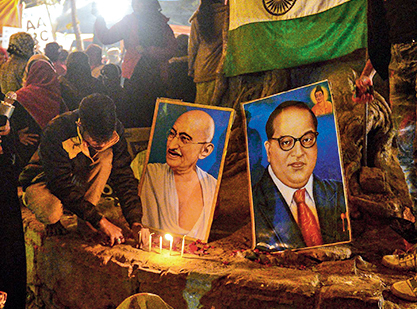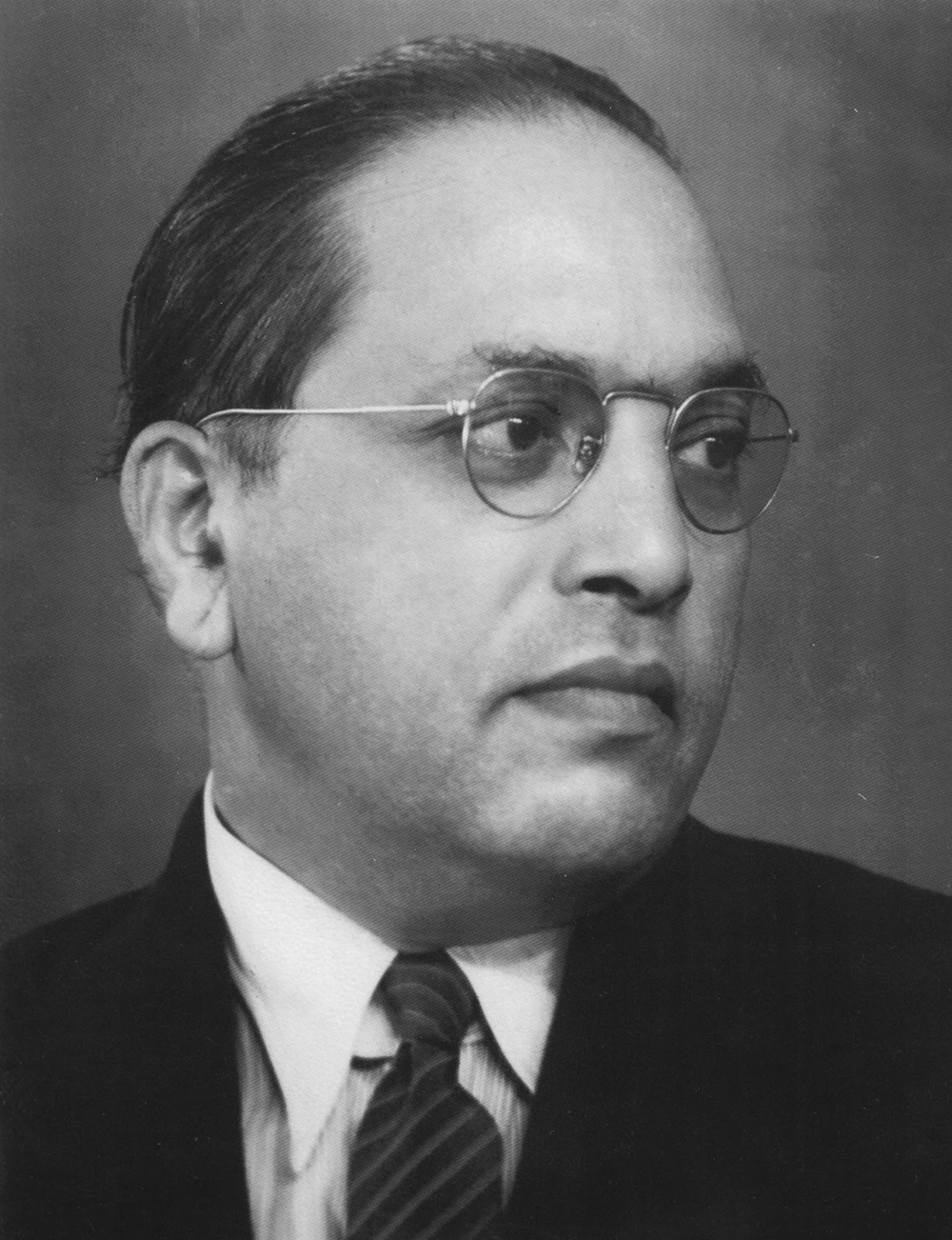In the history of politico-ethical thought in India, the concept of compassion/daya was not always pegged to the idea of identification — the spectator of suffering ‘becoming one’ with the sufferer. In fact, Mohandas Gandhi’s notion of dayadharma (religion of compassion), as the historian, Ajay Skaria, calls it, has been one of the best instances of the grounding of the idea of compassion on a crucial concept of non-identification. In his formidable book, Radical Equality: Ambedkar, Gandhi, and the Risk of Democracy, the historian, Aishwary Kumar, has argued that for Gandhi, touching/approaching the harijan/untouchable within the Indian caste axis required a certain idea of ‘economy’, ‘distance’ or the ‘phenomenology of measure’. To formulate it in different terms, it was based on the analytic of a necessary non-identification of the brahmin with the shudra. To approach this ‘different’, ‘unequal’ Other — the harijan, who was the ‘most violated’ — demanded a fortitude that, Kumar tells us, was often, counter-intuitively enough, founded upon converting the act of ‘discrimination’ itself into a political ideal.
Despite Kumar’s critique of Gandhi for contending that unlike the brahmin who could ‘become harijan’, the harijan could never emulate/‘become’ the brahmin, what is crucial to note is that even on an issue like untouchability where Gandhi is arguably at his paternalistic best, the idea of compassion towards this violated harijan was based precisely on an ethic of ‘distance’ between the brahmin and the harijan, as Kumar calls it, and not on identification/sameness. It involved an admission that the ‘upper’ caste can never be completely ‘one’ with the harijan, thereby involving a necessary unknowability/unintelligibility or, what Gandhi called, maryada, an ‘ethics of limit’ (Kumar), and what Skaria, in his crucial book on Gandhi, identifies as an ethic of ‘finitude’ that dwells at the very heart of — and thereby haunts — liberal postulations on freedom. The implication here is that ‘becoming harijan’ (just like ‘becoming woman’) for Gandhi was about two things: first, acknowledging that the ‘truth’ (satya) of the divinity of the harijan’s suffering cannot be accessed unless the one who is aiming at gaining access to this suffering (the non-harijan) sacrifices; second, this act of sacrifice is fundamentally predicated upon acknowledging that gaining access to/‘knowing’ the ‘truth-force’ of the harijan’s divine suffering cannot be based on complete identification of the non-harijan with the harijan. It must involve, what Skaria calls and Kumar explains to be, a ‘radically conservative’ process of both the brahmin and the harijan being ‘dispossessed’ from their own selves. This radically non-sovereign gesture of ‘becoming harijan’ for Gandhi was the fulcrum of the anti-colonial political struggle.
It will be a mistake to think that the act of grounding this ‘force of compassion’ (as Kumar calls it) on non-identification was the sole prerogative of Indic traditions. In Plato’s text, Alcibiades — on political governance in early Greek society — the notion of ‘Self-Care’/‘Care of the Self’ shared a remarkably similar apparatus of ideas with the aforementioned legacy of grounding compassion on non-identification. ‘Self-Care’, as Michel Foucault has demonstrated, was predominantly about an unselfconscious acknowledgement that self-knowledge or wisdom (sôphrosunê) was necessary for governing the individuals in the city-state in pre-Christian Athens. This was, in turn, only possible by not ‘learning’ about the ‘truth’ of the other’s suffering but, rather, through looking at the ‘divine’ soul of the other. As Socrates explained, this was structurally similar to how in order to see/visualize oneself, one would generally look at the ‘best part’ of the eye (the pupil) of the other person. In the process (Foucault under-emphasizes this), Plato acknowledged the necessary incompleteness of the self of the one who wishes to govern.
However, in the mainstream liberal tradition that eventually helped fortify the edifice of colonial conquest and empire, compassion had a completely heterogeneous meaning. This heterogeneity is best exemplified in one of the founding moments of Western modernity — via Adam Smith’s iconic text, The Theory of Moral Sentiments, through the notion of an apparently homologous term, ‘sympathy’. Sympathy, unlike compassion, is predominantly based on the ‘personal identification’ of the spectator of suffering with the sufferer, victim or the object of governance. The historian, Dipesh Chakrabarty, had pointed out (albeit without emphasizing the aforementioned Gandhian ethic of necessary non-identification/unknowability) that for Smith, the only way through which we can know what other sufferers might be feeling is by ‘imagining’ what we ‘ourselves’ might have felt in a similar situation. Here, the spectator imagines that he himself is enduring ‘similar torments’ and becomes, to a certain extent, the ‘same person’ as the sufferer. For Smith, as Chakrabarty further suggested, there are almost always certain principles in the very nature of an individual that ‘interest him’ in the happiness of others and render their ‘good fortune’ necessary to him. On the contrary, compassion, unlike sympathy, is not merely made to depend on the intelligibility of suffering based on self-identification.
Placing this brief conceptual history in the context of the contemporary disparagement of the evocation of religious symbols by Muslims during the anti-CAA protests that India recently witnessed and drawing from an interrogation that Partha Chatterjee, in tracing a genealogy of the present cosmopolitan order, has engaged in, the question one needs to ask is this: is the Indian State apparatus rejecting the anti-colonial, Gandhian legacy of compassion and, instead, appealing to the liberal-ideological and imperialist (Smithian) impulse of sympathy in its exercise of political power? The political scientist, Rahul Rao, has recently pointed out how the evocation of the poem, “Hum Dekhenge”, by Faiz Ahmed Faiz, bearing the lines, “Sab taj uchhale jayenge/Sab takht girae jayenge/ Bas naam rahega Allah ka,” was met with visceral disdain from the liberal-secularizing intelligentsia at IIT Kanpur for supposedly being incommensurable with the identity of a ‘tolerant’ nation. Similarly, when the Muslim woman, Hadiya, in one of her testimonies, defined ‘liberty’ as the habitual recitation of a potentially non-anthropomorphic practice like namaz, that too was met with severe scorn from the judiciary. In a speech delivered in 2012, Narendra Modi had, in fact, suggested, “Drown all your gods in water. The Swami [referring to Vivekananda] left his gods too for a higher aim. Let your god be Mahabharti [the Hindu term for the Indian nation state] now.” These instances of, what Étienne Balibar calls, the ‘careful replacement’ of religious identities with national ones have only multiplied in recent times.
What modes of political subjectivity do the State apparatus need to cultivate if it is to, once again, steer the idea of compassion towards the object of governance on non-identification and, thereby, appeal to the Gandhian (Platonic) idiom of compassion? The political future of Indian democracy hinges on whether it pegs itself to the anti-colonial, nationalist legacy of compassion or the liberal-imperialist legacy of sympathy.













